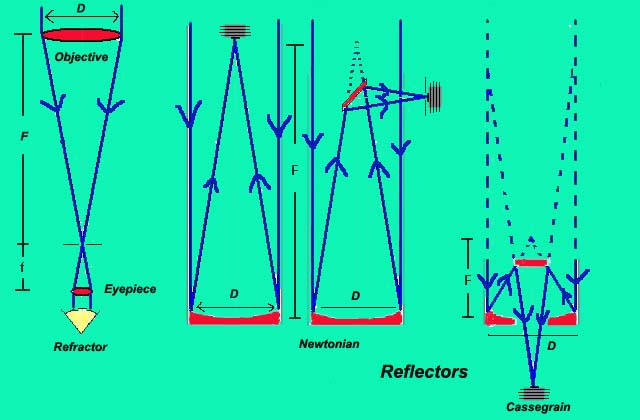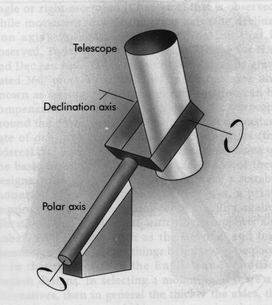A telescope consist of two parts; namely the optics and its mounting. The optics consist an objective and an eyepiece. The objective is either a convex lens (refractor) or a concave mirror (reflector)of large focal length L and diameter D, which forms an image of the celestial object at the focus.

|
The image is viewed through the eyepiece which is a magnifier of small focal length f and diameter d.These two elements are optically aligned and mounted in a close or open tube. In order to point the telescope to any celestial object, the telescope tube has to be mounted and rotated about two perpendicular axes.When one axis is vertical and other is horizontal, the mounting is known as altazimuth mounting. Because the rotation around the vertical axis changes the azimuth, while the rotation around the horizontal axis changes the altitude.

Altazimuth Mounting |

Equatorial Mounting |
The mostly used mounting is the equatorial mounting.In this mounting, one axis is made parallel to the earth's axis of rotation, which is known as polar axis. The other perpendicular axis is called as declination axis.If the telescope is mounted at the one end of the declination axis, a counterweight is attachted to the other side to balance the telescope's weight. This is known as equatorial asymmetric mounting, e.g. the German mounting. In the equatorial symmetric muonting,e.g. fork mounting or english mounting, the polar axis and the declination axis intersect with the optical axis.

German Equatorial |

Fork Mounting |